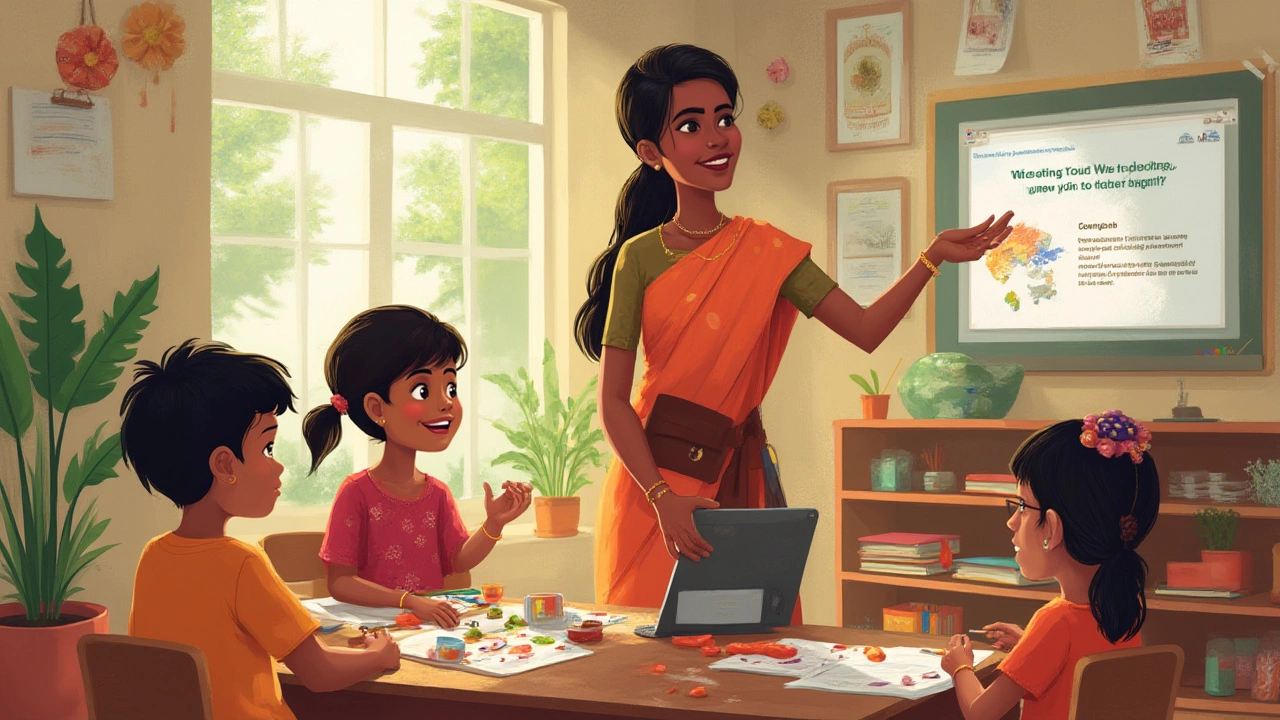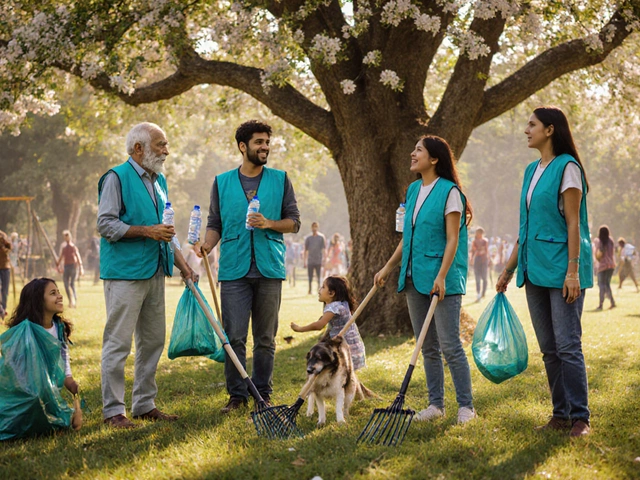If afterschool programs are so good for kids, why do so many of them struggle to fill their spots? It’s almost wild: thousands of students spend weekday afternoons with nothing to do, while programs with amazing activities, snacks, and support go under the radar. The real issue isn’t what you’re offering—most afterschool programs are already packed with value. The problem is letting parents and students know you’re an option in a sea of flyers.
Understanding Your Audience and What Matters Most
You can have the flashiest flyers in the world, but if you’re not speaking to what families care about, you’ll barely get a second glance. When parents and guardians look for an afterschool program, they’re usually thinking about three things: safety, enrichment, and convenience. A survey from Afterschool Alliance found over 60% of parents consider safety their very top priority, just above cost and location. If your program is located right at the child’s school or offers easy transportation, that’s a huge selling point.
Now, think about your own experience. Have you ever picked dinner based on which restaurant had faster service? Parents do the same kind of quick thinking for afterschool: How easy is drop-off or pickup? Does my kid get homework support so evenings can be less chaotic?
But your audience isn’t just the grown-ups. Kids and teens have a say, too, and their priorities are totally different. They want fun, social time, or maybe a cool robotics club or dance class. A survey by America After 3PM says kids are more likely to keep attending if their friends go, if there’s room for creativity, and opportunities to try new things. The biggest thing parents and kids have in common: they don’t want to waste time scrolling through boring or confusing program details.
So, before you even think about promotion, make sure you’ve got your talking points straight. Pinpoint what makes your program unique—maybe it’s your diverse staff, your weekend events, or the healthy snacks you offer. Talk to families in your program right now and ask why they stick around. You’d be surprised what details pop up: some parents love the flexible hours, while others are grateful for the boost their child gets in reading. These reasons should lead every flyer, Facebook ad, or quick conversation at the PTA meeting.
Crafting Messages That Actually Reach People
Ever see a beautifully designed poster that somehow says absolutely nothing? Or a social media post that only gets a handful of likes from the director’s friends? That’s what happens when you aim for everyone and end up catching no one. Real marketing means speaking directly to the people you want to serve—in plain language, with a focus on real benefits.
There’s plenty of hard data that shows parents crave stories, not stats. Try this: instead of leading with how long your afterschool program has existed, share a quick snapshot. "Last spring, our kids built solar-powered cars in Ms. Carla’s STEM Club. Three kids entered the state fair with their inventions." Suddenly, families are imagining what their own child might create.
Good messaging requires some testing. Are you using parent lingo or just education-speak? Quick parent interviews—even at pickup time—can tip you off about which words land best. Use "safe, flexible, and fun" way more than "enrichment opportunities" unless you’re speaking directly to grant reviewers. Make sure your main messages show up everywhere: your homepage, every handout, and on banners at family events. Consistency means people start recognizing and remembering you.
And don’t overlook language barriers. In diverse communities, translating your main flyer into Spanish, Mandarin, or Somali can increase your reach overnight. According to the Afterschool Alliance, programs reporting the highest demand were six times more likely to offer materials in more than one language. A simple QR code on the flyer linking to translated program info is an easy add-on.

Mixing It Up: Powerful Channels to Get the Word Out
You don’t need the budget of a big corporation to get noticed. What you do need is variety—and a little bit of hustle. Think outside the standard flyer-on-the-bulletin-board approach (though that doesn’t hurt). Here’s what actually works right now:
- Word of Mouth: Still unbeatable, and totally free. Parents are way more likely to trust recommendations from friends. Ask current families to post on their Facebook groups or school chat threads.
- Text Alerts: Everyone reads their phone, but few parents answer unknown calls. Short, friendly texts about open spots or special registration deals get noticed. Services like Remind or ClassDojo make this easy and secure.
- Visual Social Media: Skip the text blocks. Share real photos or 10-second videos of crafts, sports, or snack time—bonus points for kid testimonials (with parent approval!). Instagram and TikTok have a bigger reach with younger parents.
- School Partnerships: Schools are often happy to get the word out about free or low-cost programs. Ask if your flyers can go home in backpacks, or if you can run a table during back-to-school nights or parent-teacher conferences.
- Community Events: Table at fairs, local farmer’s markets, or neighborhood block parties. Setting up a "make your own slime" station or a mini-chess tournament draws families right in.
- PTA and School Counselor Collaborations: PTAs know everyone. School counselors are go-to sources for overwhelmed families. Let them know when you have scholarships, new sessions, or open houses.
- Local Media: Smaller neighborhood blogs or newsletters are hungry for feel-good stories. Offer to write a spotlight on a student or a fun recap of a recent activity day—these openings usually cost nothing.
Want a tip most people skip? Make registration as easy as possible. According to a 2023 study by YouthTruth, "click fatigue" is real: parents give up on forms that are complicated, don’t work on mobile, or require downloading extra apps. Mobile-friendly signups and quick links work wonders. If you’re using paper forms, offer help filling them out during pick-up.
Here’s a quick breakdown of what parents say matters most when choosing an afterschool program, from Afterschool Alliance’s 2024 report:
| Factor | Percent of Parents Prioritizing |
|---|---|
| Safety | 61% |
| Program hours that fit schedule | 54% |
| Type of activities offered | 48% |
| Location/Convenience | 40% |
| Cost/Value | 37% |
Notice that marketing strategies should tie back to the reasons families sign up: clear safety policies, flexible hours, and the chance for kids to have a blast with friends.
Building Engagement and Lasting Buzz
So you’ve filled a few spots—what now? Here’s where most programs drop the ball. Continued buzz depends on keeping current families excited, informed, and—honestly—a little bit in love with what you do.
Regular updates help a lot here. Email a short monthly newsletter (or text blast) with photos, upcoming events, and a quick blurb about what’s been happening. Parents appreciate the window into what goes on after the final school bell, especially if they can spot their own child in the process.
Offer shareable moments: an annual talent show, a family game night, or a week-long "Spotlight Challenge" where every day, a different student’s project is featured. Invite parents in for mini workshops, or hold a panel discussion about homework hacks and stress-free schedules. When families get involved, their investment grows.
It’s also worth setting up a simple referral program: for every family that brings in a new enrollee, offer a discount or a pizza party for their group. According to research from the National AfterSchool Association, these small rewards can increase sign-ups by up to 22%.
Ask parents and students for feedback—not just an end-of-year survey, but short check-ins. "What’s one thing you’d like to see changed?" opens up honest conversations. Responding shows you care and builds loyalty. Send thank-you notes—yes, the paper kind! When someone posts a kind review online, reply with gratitude instead of a canned response.
Don’t forget about your alumni. Kids who’ve aged out or moved on are your best testimonials. Invite them back to help as volunteers or guest mentors. Their stories and energy keep your program looking vibrant and connected to real, local success.
So, how do you market an afterschool program? Start by knowing what families want and describe those things as simply and visually as possible. Mix up your outreach—flyers, text alerts, parent champions, and a few events that give people a peek inside. Make signing up easy and communicating even easier. Families want safety, fun, and a bit of magic for their kids, and marketing just lets them see it’s already there.





